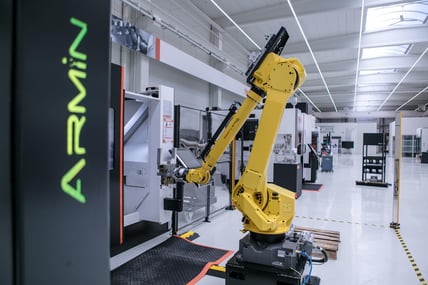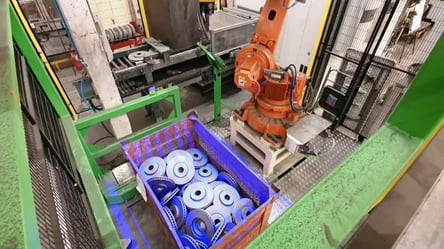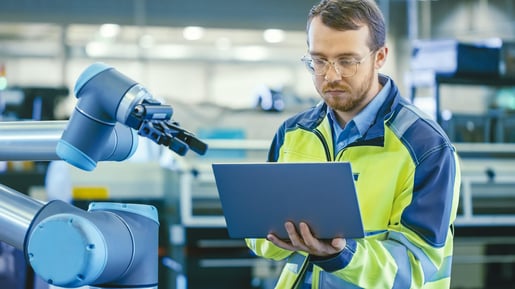Automation of industrial applications: the criteria to be considered and the smart solutions available to take the step towards the smart industry
Reduction of manufacturing costs and productivity optimization are the first decision-making criteria that come to mind when speaking about automation of industrial applications. They represent two important parameters in the return-on-investment estimation. But the labor shortage in some fields of activity and the change of mentalities in terms of well-being at work contribute significantly to taking the decision to move closer to a smart factory. At the same time, the robotic industry is making constant progress and benefits in particular from 3D scanner systems to meet the profitability requirements.
 Manufacturing cost and productivity
Manufacturing cost and productivity
The ROI (Return On Investment) is a key indicator to measure the profitability of an investment. It is used to calculate the percentage of profit expected compared with the costs involved. The ROI can be associated with the time to return on investment that is used to estimate the time it will take before the project is profitable. The manufacturing cost, mainly related to the labor cost, is the first data considered to assess the time it will take for the automated installation to become profitable. Speed, repeatability, accuracy and reliability of the process are all parameters that come into play in optimizing productivity and which allow faster amortization of investments. Flexibility is also an important parameter: an automated production line can adapt more easily to changing market demands. This is all the more true in the current situation of the health crisis in which the production activities can only be maintained by limiting human interactions.
Labor shortage and change of mentalities in terms of well-being and safety at work
But sticking to these criteria would be too restrictive and misleading to make a good investment decision. The shortage of unskilled labor in various geographic areas and the change of mentalities about work arduousness and safety are pushing companies to find an alternative to repetitive manual work. Tiresome and unrewarding, some operations must be performed in harsh environments (subject to heat, sometimes toxic dust, etc.) in which it is difficult to maintain a good level of Overall Equipment Effectiveness (OEE)(1) (in foundries and forges for instance). In some cases, there may be physical difficulty in performing a task. The raw parts to be loaded into numerically controlled machines are often difficult to handle, heavy and sometimes cumbersome. Lifting a car part weighing a few kilos remains a relatively easy task, but over one day it is equivalent to handling several hundred kilos for a single individual. The human body can therefore be subject to very high stresses, resulting in long work stoppages, absenteeism, higher turnover and often labor shortage. It is therefore important to take into account the change in the level of the work-related MSDs (Work-related Musculoskeletal Disorders(2)), not only as part of a process of constant improvement in employee well-being, but also to increase productivity.
Ethical and intelligent robotics
It seems obvious that, for certain industries and applications, robots can improve the living conditions of operators to reach a humanly acceptable working environment while improving productivity.
For the past fifteen years, industrial robotics have found a valuable ally to facilitate the tasks of operators and help improve the productivity rate. Intelligent robotization based on 2D and 3D cameras are a matter of course nowadays. Some industrial vision systems integrating artificial intelligence algorithms can see and analyze a complex and changing environment, and can pass relevant information to an automation system. They assist the picking and placement of objects accurately inside the manufacturing machines without interrupting the processes and thus guaranteeing higher rates of return. Some cutting-edge industrial vision companies offer robust and secure solutions (collaborative robots that not only achieve very favorable return on investment times but also help to reduce MSDs. Vision system installation and implementation times as well as the time required for workpiece program preparation have dropped from weeks to just few days over the past decade. Most of the sensors are factory-calibrated and the standard communication protocols (Ethernet TCP/IP, Profinet, etc.) allow easy and fast communication with the automation part.
 Bin-picking: the Holy Grail
Bin-picking: the Holy Grail
Numerous fields of activity (automotive, foundry, etc.) and applications (localization, inspection, and identification of parts, robot guidance, bin-picking, etc.) are already taking advantage of the benefits provided by 2D and 3D industrial vision systems. Bin-picking is an especially interesting example as it requires extremely accurate and reliable visual and cognitive analysis solutions to ensure precise picking and placement of the object.
Some vision systems are now able to automatically generate the robot paths (Advanced Path Planning) by taking into account the obstructions inside the work cell and controlling each robot joint. The power of the integrated processors has led to a significant reduction in computation times, allowing tasks to be completed within delays acceptable from a process point of view. A few seconds are sufficient to tell the robot which parts to pick up or to precisely bring a tool as close as possible to the operation to be performed. These operations, which are very often carried out in hidden time, do not impact the process. Thanks to these technological developments, times to return on investment of less than 1 year are now a reality in some industrial sectors. These benefits open the path to the democratization of technologies that were reserved a few years ago to only a few innovation projects. This will ultimately lead to the disappearance of stressful and unsafe activities with very low added value, in favor of more rewarding and safe jobs while keeping the profitability of companies in sight.
(1) Overall Equipment Effectiveness, OEE is the percentage of manufacturing time that is truly productive
(2) Work-related Musculoskeletal Disorders: refers to a group of painful disorders of muscles, tendons, and nerves. Carpal tunnel syndrome, tendonitis, thoracic outlet syndrome, and tension neck syndrome are examples.



